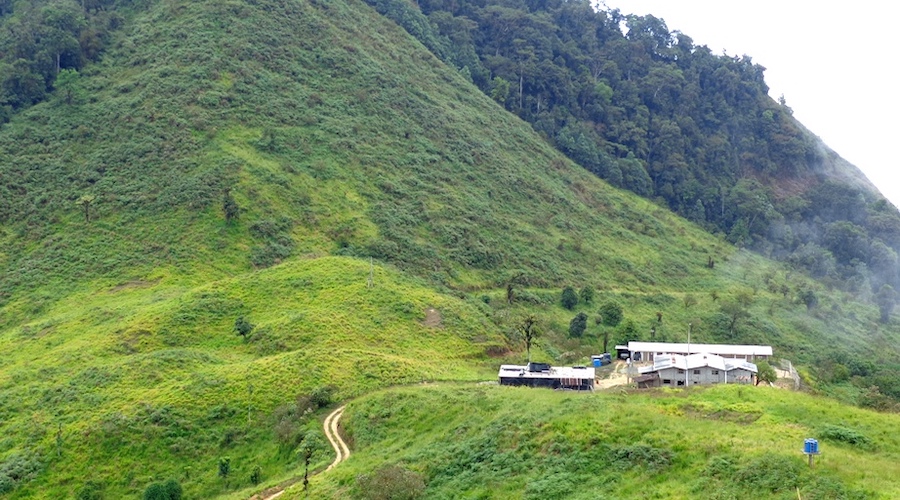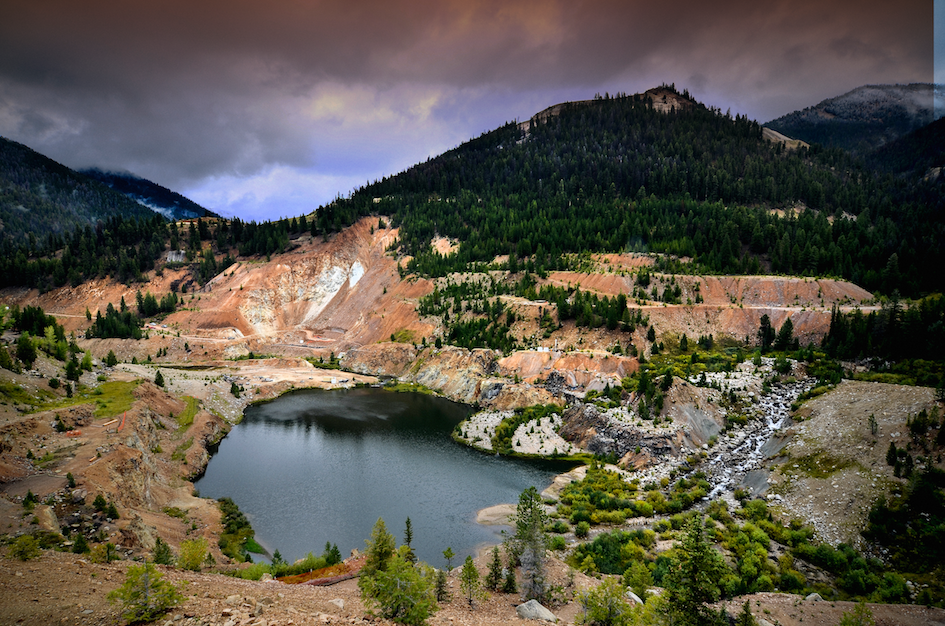Mining
Friday, July 12th, 2024 2:25 pm EDT
Key Points
- Unique Geological Potential of Alaska: Alaska’s vast area of 1.7 million square kilometers hosts significant undiscovered mineral deposits, attracting major mining companies and generating $3 billion annually from seven large mines. The state also has abundant critical minerals and rare earth elements, which the U.S. Department of Energy supports for regional economic growth and job creation.
- Boulder Creek Uranium Project: Panther Minerals’ Boulder Creek project, located in northwestern Alaska, includes the Boulder Creek uranium deposit and Fireweed prospect. Historical data indicates a significant reserve estimate at Boulder Creek and promising radiometric anomalies at Fireweed, making them key exploration targets.
- Exploration and Permitting Activities: Panther Minerals is compiling historical data, reviewing drilling core, and submitting permits for exploration, including diamond drilling, at the Boulder Creek property. The company aims to enhance understanding and confirm radiometric readings to advance their exploration efforts efficiently.
Panther Minerals Inc. has shared some of what makes Alaska so unique and how the company’s Boulder Creek uranium project is one of many prospective opportunities formed in this land of geological plenty.
Alaska, big state, big potential: Alaska, at 1.7 million square kilometres, is more than a sixth of the total area of the United States and is the size of Texas, California and Montana combined. The state is highly prospective for hosting many undiscovered mineral deposits, including many critical mineral commodities, and has attracted many of the world’s largest mining companies. Alaska is home to seven large producing mines that generate a combined total of $3-billion in annual gross mineral production and provide full-time employment to approximately 5,400 people.
Alaska has a wealth of critical minerals and rare earth elements, prompting the U.S. Department of Energy to support efforts to spur regional economic growth and job creation by realizing the full potential value of these natural resources.
Alaska has regularly been ranked in the top 10 of the Fraser Institute’s annual survey of mining companies — global investment attractiveness. While Alaska’s vast and largely untapped mineral wealth is celebrated, the Far North state has lesser known and not as widely understood advantages over many other mining jurisdictions, including a first nations land claim settlement regime that many consider to be one of the most successful regimes on the planet.
Alaska Governor Mike Dunleavy recently declared May 10, 2024, annual Alaska Mining Day in recognition of the importance of mining in the founding and early development of Alaska’s history. Governor Dunleavy’s declaration noted that Alaska’s expansive landscapes are known to contain tremendous deposits of precious metals, base metals, coal, rare earth minerals, and other critical and strategic minerals that are an essential component of the United States’ economy and security. Governor Dunleavy also stated, “I’m pleased to announce more investments from the Bipartisan Infrastructure Law to improve mapping of Alaska’s geology and critical mineral resources,” and “We are working with the entire state of Alaska to assess domestic resource potential and secure a reliable and sustainable supply of critical minerals.”
Given Alaska’s favourable geological setting, geopolitical stability, government support and emerging domestic importance, the company’s management is excited to continue its exploration activities at the Boulder Creek uranium project.
About the Boulder Creek uranium property
The property is located on Alaska’s Seward peninsula in northwestern Alaska and hosts the Boulder Creek uranium deposit and the Fireweed prospect, both within Tertiary-aged sandstones peripheral to a late Cretaceous alkalic quartz monzonite intrusion.
Boulder Creek deposit
Drilling between 1979 and 1981 at the Boulder Creek deposit by Houston Oil and Minerals outlined a historical reserve estimate of one million pounds of triuranium octoxide at an average grade of 0.27 per cent U3O8 and average thickness of three metres, with depths of mineralization from the surface to 120 metres (source: Economic Geology, Volume 82, 1987, pages 1,558 to 1,574). This estimate was based on data from 52 diamond drill holes totalling over 3,350 metres (about 20 of these holes encountered mineralization) and 21 surficial split-tube sample holes totalling about 60 metres by HOM. HOM also did extensive prospect-level geologic mapping and prospecting, soil and biogeochemical surveying, and ground geophysical surveying. It also conducted some baseline environmental work.
The foregoing is a historical estimate made prior to the implementation of National Instrument 43-101 (Standards of Disclosure for Mineral Projects) and was not prepared in accordance with the requirements of NI 43-101, nor does it use the categories of mineral resources set forth in NI 43-101; however, with the limited information available to the company at this time, it is not able to provide an explanation of the differences. While the company considers the historical estimate to provide information as to the historical exploration on the property, the company has not completed the work necessary to verify the classification of the resource. The company is not treating the historical estimate as compliant with NI 43-101. The historical estimate should not be relied upon.
A qualified person has not done sufficient work to classify the historical estimate as current mineral resources or mineral reserves, and the company is not treating the historical estimate as current mineral resources or mineral reserves.
Fireweed prospect
The Fireweed prospect is a uranium discovery made by Triex Minerals Inc., in 2006, located approximately 28 kilometres northwest of the Boulder Creek uranium deposit. The Fireweed mineralization was discovered in outcrop through the investigation of a strong radiometric anomaly detected by Triex’s regional exploration program. The anomaly was visited in 2006, and four samples taken, with sample No. 95812 returning 0.82 per cent U3O8 (6,950 parts per million uranium) from “granitic, stained brick red by pervasive hematite, with specks of black mineral, likely pitchblende, forming about 2 per cent of the sample” (Triex internal company report — 2006 report on Boulder Creek property).
In 2007, Triex returned to the Fireweed showing and completed 22 line km of ground magnetic susceptibility and radiometric surveying, rock and soil sampling survey, and prospecting. As reported in Triex first quarter of fiscal 2008 (three months ended Oct. 31, 2007): “Twenty-one rock samples collected from three main areas along the contact contain from 0.14 per cent to 0.81 per cent U308. These data confirm the 0.82-per-cent U308 value obtained from the single sample collected during a brief site visit in 2006. More than 300 subangular radioactive pebbles of silica-hematite rock have been identified from 130 mapped sites which cover an area of approximately 1,800 metres long east-west by 700 metres wide north-south. A quick, first-pass drill test was done at Fireweed in September. Five short drill holes were completed for a total of 267 metres. Overburden in four of five holes was only 1.5 metres thick. Quartz syenite is predominant, and in all five holes, there is lesser feldspar that locally reads two or three times background radioactivity. Brick red hematite-silica zones similar in appearance to the pebbles mapped on surface were observed in hole 5 and were five times background radioactivity.”
Based on the data reviewed to date, and as indicated in the Triex reports, the size and strength of the anomalies (airborne radiometric, ground radiometric, rock sampling and soil geochemistry) at the Fireweed prospect are much larger and stronger than at the Boulder Creek deposit. The values from one season of sampling are very encouraging and represent another priority target for the company. In addition, although at an early exploration stage, the Fireweed mineralization differs substantially from that at the Boulder Creek deposit.
Exploration at Boulder Creek
Panther Minerals has been undertaking compilation of all historical data available through previous work conducted by past operators of the Boulder Creek project, Houston Oil & Minerals Corp., Triex Minerals and Full Metal Minerals Ltd. With significant historical data available, the company will continue its full review and analysis of drilling core located on the property and additional core located in Anchorage, Alaska. The data obtained will give Panther Minerals a better understanding of the model and formation, as well as the opportunity to utilize its spectrometer to analyze and confirm radiometric readings.
Panther Minerals has submitted drill and work permits for its Boulder Creek property related to a proposal to conduct exploration activities, including diamond drilling, on active federal mining claims that comprise a portion of the property, which is under option by the company (see the company’s news release dated April 15, 2024). The company has engaged Jack DiMarchi, Core Geoscience LLC, to manage the company’s permitting activities in Alaska. Additional permitting submittals will follow related to activities on the state claims and with regard to the proposed field camp.
Qualified person
The scientific and technical information in this news release has been reviewed and approved for disclosure by Lindsay Bottomer, PGeo. Mr. Bottomer is a qualified person within the meaning of National Instrument 43-101 (Standards of Disclosure for Mineral Projects) and is a consultant for the company.
About Panther Minerals Inc.
Panther Minerals is a mineral exploration company actively involved in the exploration of its North American project portfolio. The acquisition of the Boulder Creek option reflects the company’s continuing intention of pursuing advanced, high-quality prospective uranium projects that can be readily worked on and efficiently explored in a timely manner.
We seek Safe Harbor.




